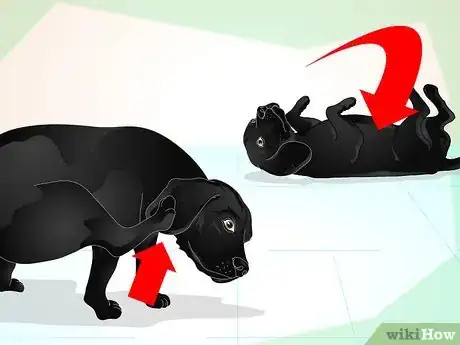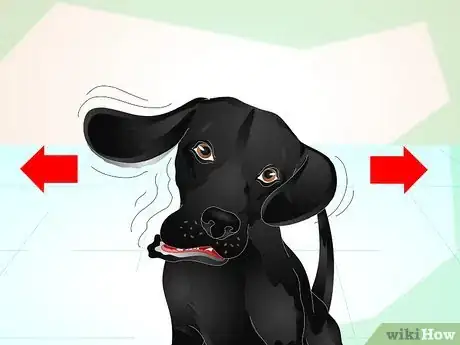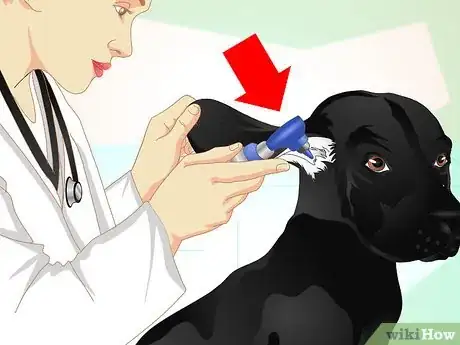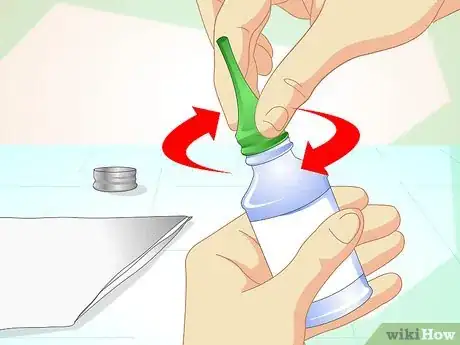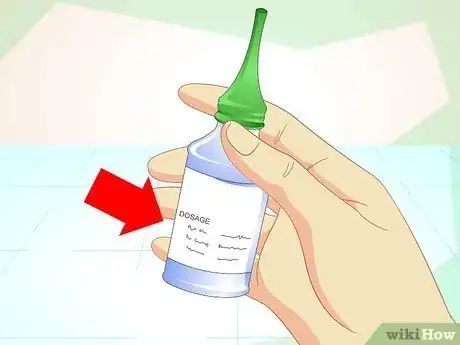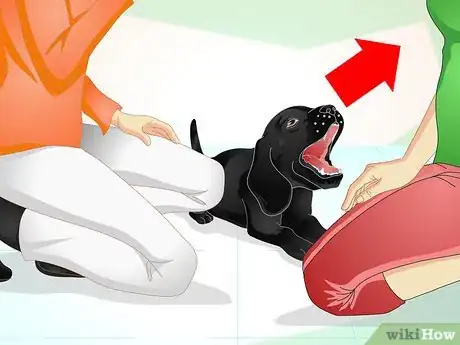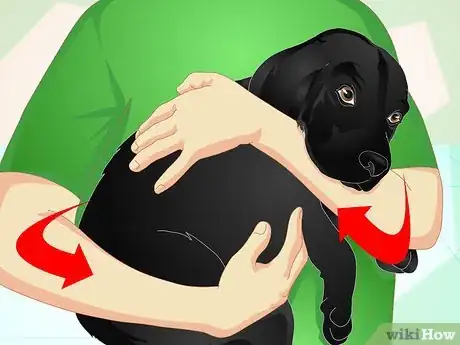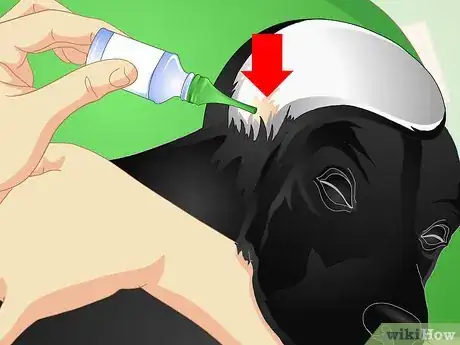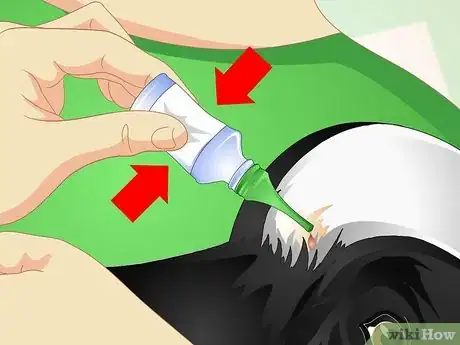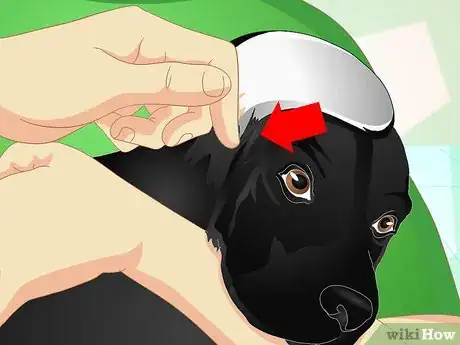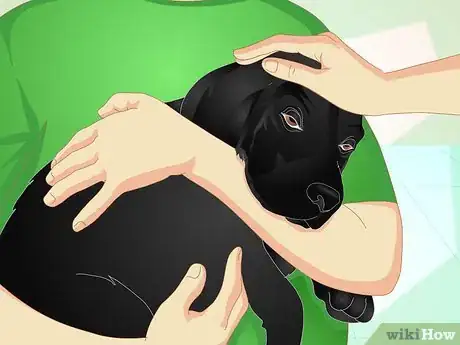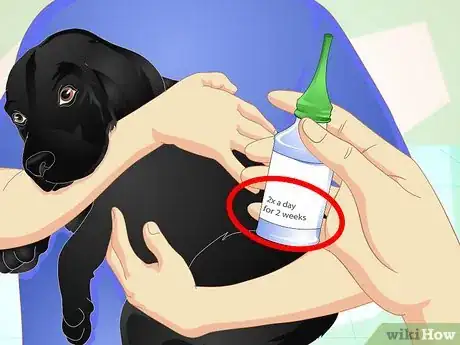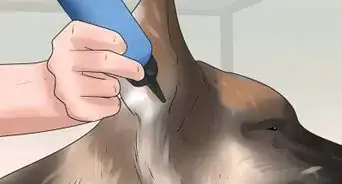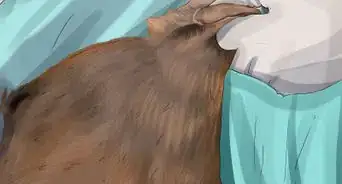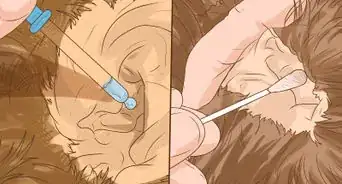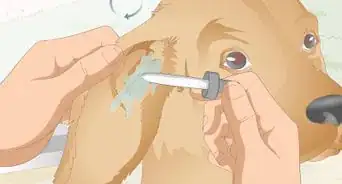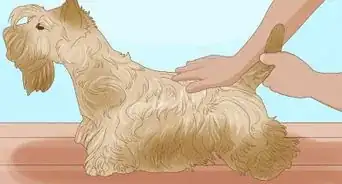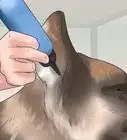This article was co-authored by Natalie Punt, DVM. Dr. Natalie Punt is a Veterinarian and the Founder and CEO of mPet- a smart phone app for pet owners to store, manage and transfer their pets medical records and health information. She specializes in small animal emergency and general medicine and veterinary practice economics. Dr. Punt holds a BS in Biochemistry and Molecular Biology from The University of California, Davis, an MS in Biochemistry from The University at Buffalo, and a DVM from Western University of Health Sciences.
This article has been viewed 36,979 times.
If you own a dog, there may be times when you need to put medicine in its ears to treat an ear infection, parasites, or fungus. Your dog may not like this treatment and try to resist it, so it's important to figure out how to administer the medicine as quickly and easily. You also need to make sure that the ear medication itself won't harm your dog's ear, so be sure to assess your dog's ears for symptoms of a ruptured eardrum before applying medicine.
Steps
Assessing Your Dog's Ears
-
1Assess your dog for symptoms of a ruptured eardrum. Before you put medicine in a dog's ear you must first make sure you won't harm your dog’s ears by doing it. Therefore, before placing any medication in the dog’s ear you must make sure the eardrum is not damaged. Never place medication in a dog showing these signs, as they can indicate a possible ruptured eardrum:[1]
- Unusual head tilting
- Loss of balance (tipping to one side or falling down)
- Vomiting
- Pain when the ear is touched
- Drainage of thick and/or bloody fluid from the ear
-
2Pay attention to signs that the inner ear is damaged. If you place medication into an ear that has a damaged or ruptured eardrum, the medication can damage the delicate structures the make up the inner ear. Damage to these structures are indicated by these symptoms:[2]
- Head shaking
- Pain
- Rubbing the ear(s) on the floor
- Pawing or scratching at the ear
- Head tilt
- Loss of balance or falling over
- Turning in circles towards the damaged ear
Advertisement -
3Have a veterinarian inspect your dog's eardrums. The only way to be totally sure that your dog's eardrums are fine is by having them examined by a veterinarian or veterinary technician. The vet, or vet tech, will use an otoscope, which is a lighted instrument, to peer into the ear canal to visually see the eardrum.[3]
- It is important that the eardrum does not have any damage and is not torn. If you apply medicine to an ear with a damaged eardrum it could damage the ear further, including the risk of full hearing loss.[4]
Preparing to Apply Medication
-
1Gather supplies before holding the dog in place. Put the medication and tissue paper or paper towels within arms reach. Remove the cap from the medication. Most come with a long narrow nozzle that you can place on the medication container. Be sure to place this on the open end before proceeding.
-
2Read the directions on the medicine. The medication tube or bottle should have directions that will tell you how much to apply, how often to apply it, and when to use the medication. If in doubt, contact your veterinarian for clearer instructions.
- There are a variety of medicines for dog's ears and they usually come in a liquid or an ointment form. Antibiotics for ear infections, for example, come in both liquid and ointment forms. Treatments for ear mites, on the other hand, usually come in liquid form.
- Your veterinarian may also prescribe a veterinary ear cleaning wash. This will help clean out wax and debris from the ear, making your dog's ears healthier and allowing medication to absorb more easily.
-
3Find a helper. Have a helper that can help you hold the dog steady. This will make your job easier and it helps the dog avoid injuring itself.
- If the dog is in pain or doesn’t want its ears touched you may need to muzzle him or her. This will keep you safe and sometimes diverts the dog’s attention enough that you will be able to put the medication in its ears.
- Placing a leash on the dog can also help you maintain control over a dog that does not want its ears messed with.
- You can do this by yourself if needed, but a helper can make things easier for you and for the dog.
-
4Hold the dog steady. Have your helper place one arm under the dog’s head so its neck rests on the helpers elbow bend. Have the helper put his or her other hand around the dog’s body, holding it steady.
- If a helper isn’t available have the dog lay down. You will need to hold it steady while applying the medication. Place one arm gently across the neck and under the chin of the dog, and use the hand of that arm to hold the lower front leg. Place the other elbow on top of the dog, pinning its upper front leg to its body.
Applying Ear Medication
-
1Carefully aim the nozzle’s opening toward the ear canal’s opening. Make sure it doesn’t touch any part of the canal. Hold the dog's ear flap open if you need to.[5] This will help to keep the nozzle and medication from being contaminated before the next application.
-
2Squeeze the tube or bottle gently. Deliver the proper amount of medication into the ear canal. If the medicine is liquid, this is usually specified in a number of drops from a squeeze bottle. If the medicine is an ointment, then the proper amount may be specified differently. Make certain to aim the nozzle tip towards the opening of the ear canal so the medication actually gets into this area.
-
3Massage the outside of the ear canal. Once the medication is delivered gently massage the base of the ear to make sure the medication is evenly distributed. Use a piece of tissue or a paper towel to wipe any medication that has spilled down the ear onto the fur.[6]
-
4Hold the dog steady for awhile. A dog's first instinct when you put medicine in its ear is to shake its head. After that initial shake, try to keep the dog from excessively shaking his or her head for a few minutes in order to give the medication time to work. You can release the dog if you don't think it will go wild, but try distracting the dog with gentle play or a food treat or even a short, slow leash walk.
- Once again, wipe around the ear to remove any excess drops that have drained from the ear.
-
5Apply medication for as long as prescribed. Make sure to give the medication to the dog as long as the label directions instruct. Failure to do so may result in not fully eradicating the problem and may even make the infection stronger by building its resistance to the medication.
Warnings
- Avoid contaminating the tip of the nozzle by only keeping the cap off long enough to deliver the medication to the ear and replacing the cap as soon as possible.⧼thumbs_response⧽
Expert Interview
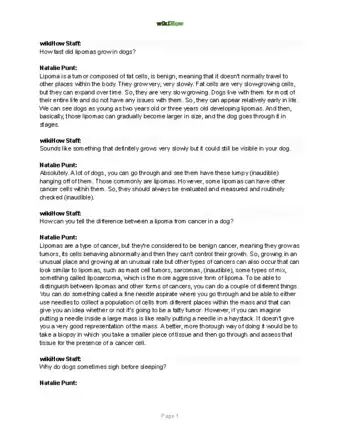
Thanks for reading our article! If you'd like to learn more about taking care of a dog, check out our in-depth interview with Natalie Punt, DVM.
References
- ↑ http://www.vcahospitals.com/main/pet-health-information/article/animal-health/tympanic-membrane-rupture-and-middle-ear-infection-in-dogs/6476
- ↑ http://www.peteducation.com/article.cfm?c=2+2091&aid=1592
- ↑ https://www.banfield.com/getmedia/3c0c9853-d9d8-450a-983d-1ce0208682bc/1_5-inside-the-ear
- ↑ http://www.vcahospitals.com/main/pet-health-information/article/animal-health/ear-infections-in-dogs-otitis-externa/750
- ↑ http://www.petful.com/pet-health/how-to-administer-dog-medicine-5-tips/
- ↑ http://www.petful.com/pet-health/how-to-administer-dog-medicine-5-tips/
About This Article
To deliver ear medication to your dog, start by having the dog lay down, wrapping your arm around its neck, and holding its front leg with your hand to keep it still. Then, hold the dog’s ear flap open to expose the ear canal and aim the nozzle of the medication into the opening. Next, gently squeeze out the correct number of drops and massage the base of the ear to distribute the medicine. Finally, hold your dog steady for a few minutes so it doesn’t shake out the medicine. For tips from our Veterinary co-author on how to clean your dog’s ears before applying ear medicine, read on!
